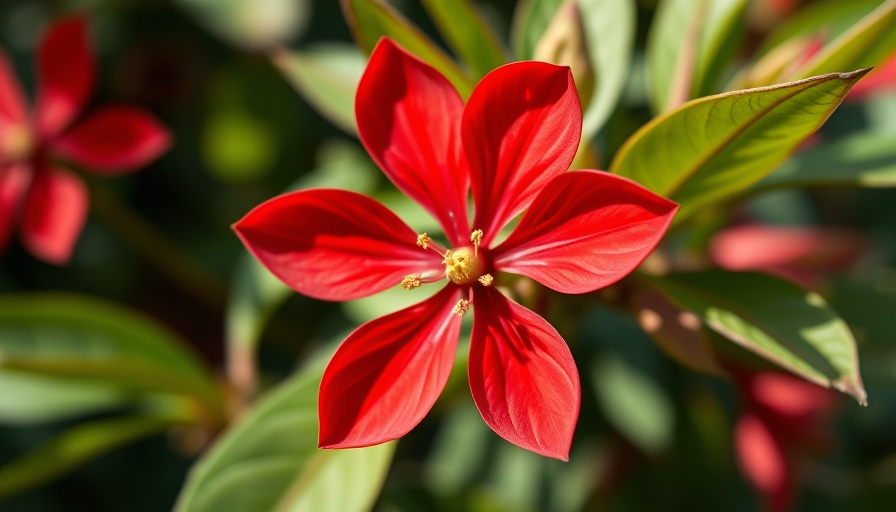
Discover the Beauty of Carolina Allspice: The Perfect Shrub for Your Garden
If you’re looking to enhance your garden with a fragrant and visually stunning shrub, look no further than the Carolina allspice (Calycanthus floridus), also known as sweetshrub. This native species hails from the southeastern United States and features striking maroon blooms along with glossy green foliage, making it an excellent choice for hedging, landscaping, or simply adding character to your garden.
What Makes Carolina Allspice Unique?
Carolina allspice is a deciduous shrub that thrives in USDA Hardiness Zones 4 to 9, flourishing in clay soils and resisting most pests and diseases. This resilience, along with its unique aromatic qualities—often likened to a blend of fruit and spice—creates an enchanting atmosphere in any outdoor space.
Growing Carolina Allspice: Your Comprehensive Guide
To successfully grow Carolina allspice, ensure it is planted in well-draining, organically rich loam with a pH level between 5.0 to 8.0. While it enjoys full sun, it can also thrive in partial shade conditions. With a time to maturity of 2-5 years, expect it to reach a mature height of 6-10 feet and a width of 6-12 feet.
Explore the Many Cultivars of Carolina Allspice
Gardeners today can choose from a variety of cultivated forms of Carolina allspice, which offer larger flowers and unique colors beyond the traditional maroon. These enhanced cultivars add versatility to your garden design, allowing for creative expression in landscape aesthetics. Incorporating these options can elevate your overall garden appeal, making it both visually pleasing and aromatic.
Maintenance and Care: Keeping Your Sweetshrub Thriving
Regular maintenance is crucial for ensuring your Carolina allspice flourishes. Pruning is vital to encourage healthy growth and maintain its shape. It's recommended to prune after they bloom to maintain the shrub's form and boost floral production for the following season. Additionally, adding mulch can help retain moisture and inhibit the growth of weeds, minimizing your garden upkeep.
Propagation Techniques: How to Grow More Carolina Allspice
If you're eager to expand your Carolina allspice collection, propagation can be achieved through seed starting and cuttings. This process enables you to share the beauty of this unique shrub with friends and family while enriching your own garden. By understanding the intricacies of propagation, you create opportunities for continuous cultivation.
Common Pests and Diseases: What to Watch For
Despite its hardiness, Carolina allspice can occasionally be susceptible to common pests and diseases. Maintaining good garden hygiene, ensuring proper spacing, and keeping your plants healthy will significantly reduce the likelihood of infestations. Regular inspection will help identify any issues early on, allowing for prompt interventions.
Why Carolina Allspice Matters to Today's Gardeners
In an age where biodiversity and ecological responsibility are becoming increasingly important, choosing native plants like Carolina allspice enhances local ecosystems. By providing nectar and habitat for pollinators, you contribute to the overall health of the environment while also enjoying the beauty and fragrance of this wonderful shrub.
Whether you’re designing new flower beds, enhancing existing structures, or creating a thriving garden filled with lush greenery, Carolina allspice offers versatility combined with beauty. Opt for this fragrant shrub in your outdoor living space and experience the numerous benefits it has to offer, from garden aesthetics to ecological contributions.
Ready to take your garden to the next level? Start planning your Carolina allspice quarantine and watch it flourish!
 Add Row
Add Row  Add
Add 




Write A Comment